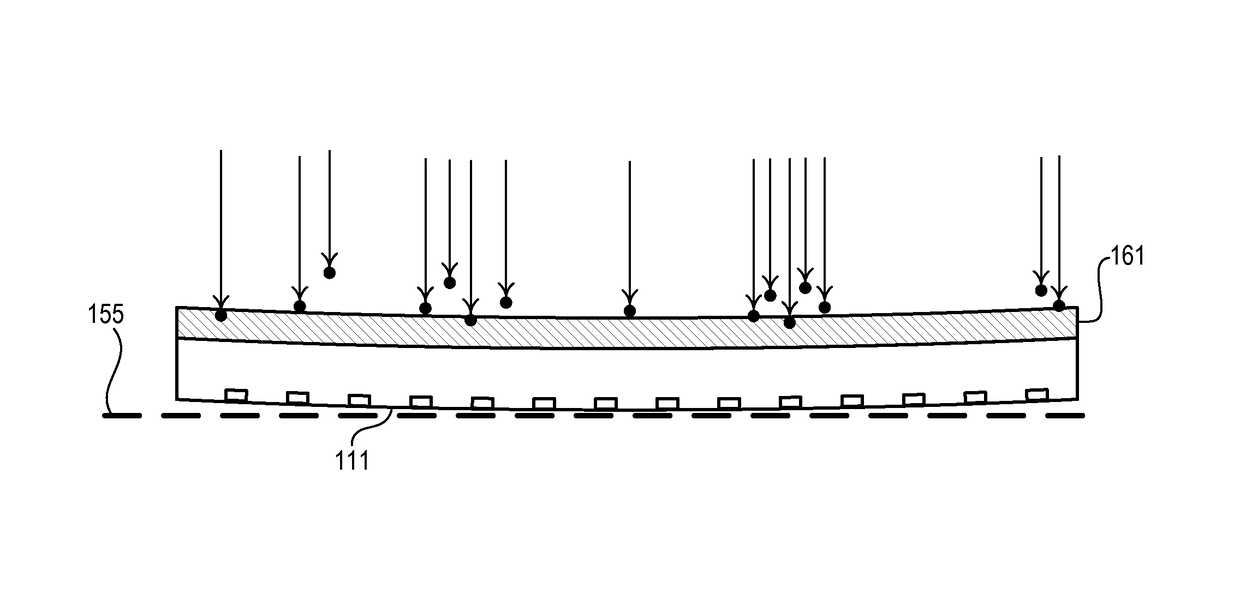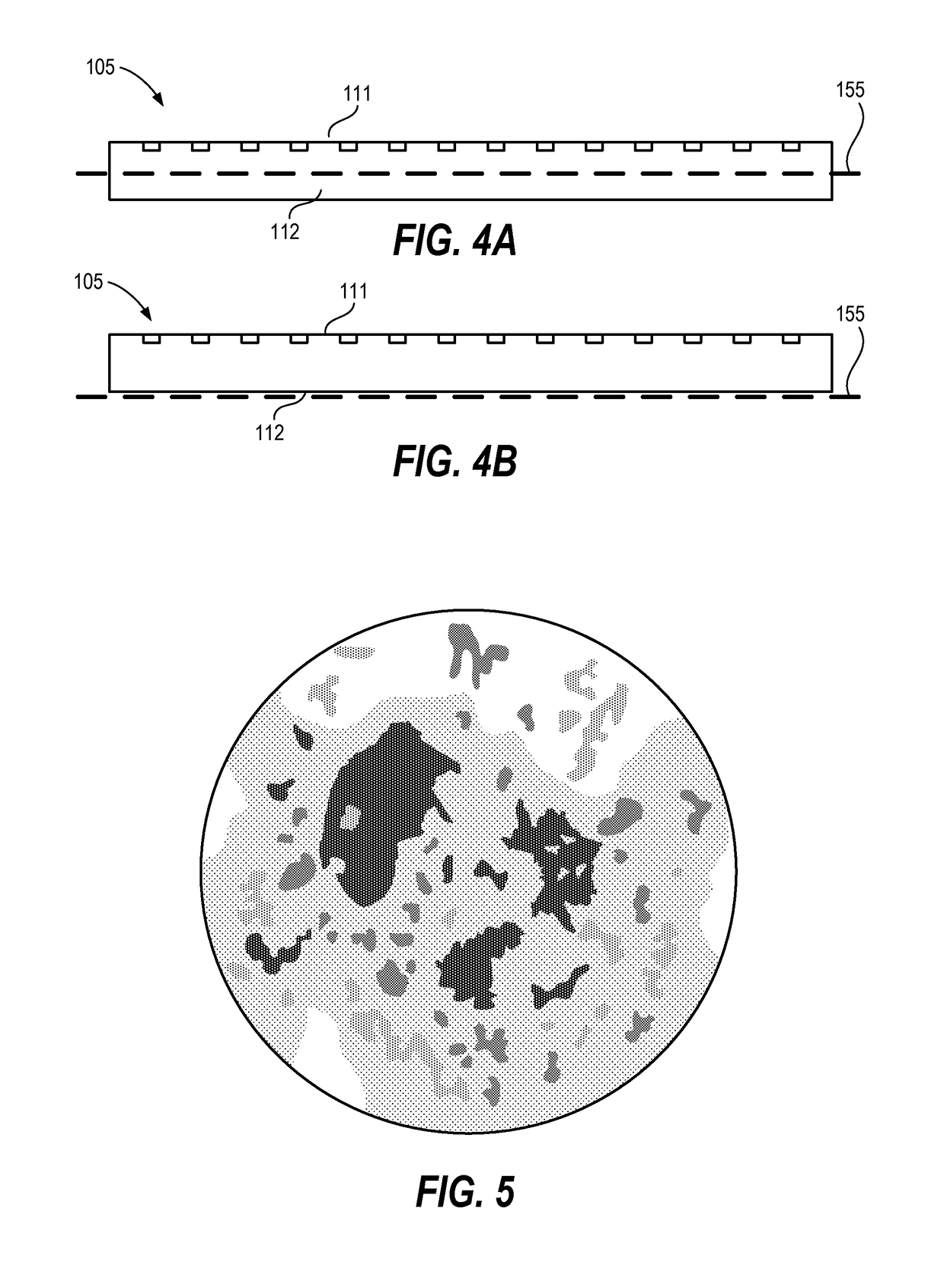Method for correcting wafer bow from overlay
a technology of wafers and bows, applied in the field of wafer overlays, can solve the problems of overlay errors, expansion exceeds overlay error requirements, and large overlay errors, and achieve the effect of improving the overlay
- Summary
- Abstract
- Description
- Claims
- Application Information
AI Technical Summary
Benefits of technology
Problems solved by technology
Method used
Image
Examples
Embodiment Construction
[0028]Techniques include treating a backside or backside surface of a substrate with particles of varying doses, densities, and spatial locations such that stress controlled by inside energies due to the substrate interaction changes the substrate bow to improve overlay. In other words, techniques herein included targeted particle bombardment of a substrate backside surface to flatten a substrate or cause the substrate to become more planar by reducing points of deflection. The top side of a substrate (opposite that of backside) typically receives a film stack, fabricated devices, partially fabricated devices, features, etc. Thus, the top side of the substrate can also be known as a working surface. In semiconductor fabrication, substrates typically become warped or bowed due to the overlay of various films and devices being deposited and / or fabricated thereon. Such processes can include annealing and other treatments that tend to warp a substrate. Techniques herein, however, correc...
PUM
| Property | Measurement | Unit |
|---|---|---|
| height | aaaaa | aaaaa |
| height deviation | aaaaa | aaaaa |
| height | aaaaa | aaaaa |
Abstract
Description
Claims
Application Information
 Login to View More
Login to View More - R&D
- Intellectual Property
- Life Sciences
- Materials
- Tech Scout
- Unparalleled Data Quality
- Higher Quality Content
- 60% Fewer Hallucinations
Browse by: Latest US Patents, China's latest patents, Technical Efficacy Thesaurus, Application Domain, Technology Topic, Popular Technical Reports.
© 2025 PatSnap. All rights reserved.Legal|Privacy policy|Modern Slavery Act Transparency Statement|Sitemap|About US| Contact US: help@patsnap.com



